- Home
- Michael Crichton
Timeline Page 5
Timeline Read online
Page 5
She said, “I’m surprised Professor Johnston didn’t come with us.” Kramer had really expected to deal with Johnston himself. She was, after all, a high-level executive from the company that funded their research. Protocol required that Johnston himself give the tour. And she had planned to start working on him in the helicopter.
“Unfortunately, Professor Johnston had a prior appointment.”
“Oh?”
“With François Bellin, the minister of antiquities. He’s coming down from Paris.”
“I see.” Kramer felt better. Obviously, Johnston must first deal with authorities. The Dordogne project was entirely dependent on good relations with the French government. She said, “Is there a problem?”
“I doubt it. They’re old friends. Ah, here we go.”
The helicopter burst through the fog into morning sunlight. The stone farmhouses cast long shadows.
As they passed over one farm, the geese in the barnyard flapped, and a woman in an apron shook her fist at them.
“She’s not happy about us,” Marek said, pointing with his massive muscular arm.
Sitting in the seat behind him, Kramer put on her sunglasses and said, “Well, it is six o’clock in the morning. Why did we go so early?”
“For the light,” Marek said. “Early shadows reveal contours, crop marks, all that.” He pointed down past his feet. Three heavy yellow housings were clamped to the front struts of the helicopter. “Right now we’re carrying stereo terrain mappers, infrared, UV, and side-scan radar.”
Kramer pointed out the rear window, toward a six-foot-long silver tube that dangled beneath the helicopter at the rear. “And what’s that?”
“Proton magnetometer.”
“Uh-huh. And it does what?”
“Looks for magnetic anomalies in the ground below us that could indicate buried walls, or ceramics, or metal.”
“Any equipment you’d like that you don’t have?”
Marek smiled. “No, Ms. Kramer. We’ve gotten everything we asked for, thank you.”
The helicopter had been skimming over the rolling contours of dense forest. But now she saw outcrops of gray rock, cliff faces that cut across the landscape. Marek was giving what struck her as a practiced guided tour, talking almost continuously.
“Those limestone cliffs are the remains of an ancient beach,” he said. “Millions of years ago, this part of France was covered by a sea. When the sea receded, it left behind a beach. Compressed over eons, the beach became limestone. It’s very soft stone. The cliffs are honeycombed with caves.”
Kramer could indeed see many caves, dark openings in the rock. “There’re a lot of them,” she said.
Marek nodded. “This part of southern France is one of the most continuously inhabited places on the planet. Human beings have lived here for at least four hundred thousand years. There is a continuous record from Neanderthal man right up to the present.”
Kramer nodded impatiently. “And where is the project?” she said.
“Coming up.”
The forest ended in scattered farms, open fields. Now they were heading toward a village atop a hill; she saw a cluster of stone houses, narrow roads, and the stone tower of a castle rising into the sky.
“That’s Beynac,” Marek said, his back to her. “And here comes our Doppler signal.” Kramer heard electronic beeps in her headphones, coming faster and faster.
“Stand by,” the pilot said.
Marek flicked on his equipment. A half dozen lights glowed green.
“Okay,” the pilot said. “Starting first transect. Three . . . two . . . one.”
The rolling forested hills fell away in a sheer cliff, and Diane Kramer saw the valley of the Dordogne spread out beneath them.
:
The Dordogne River twisted in loops like a brown snake in the valley it had cut hundreds of thousands of years before. Even at this early hour, there were kayakers paddling along it.
“In medieval times the Dordogne was the military frontier,” Marek said. “This side of the river was French and the other side was English. Fighting went back and forth. Directly beneath us is Beynac, a French stronghold.”
Kramer looked down on a picturesque tourist town with quaint stone buildings and dark stone roofs. The narrow, twisting streets were empty of tourists. The town of Beynac was built against the cliff face, rising from the river up to the walls of an old castle.
“And over there,” Marek said, pointing across the river, “you see the opposing town of Castelnaud. An English stronghold.”
High on a far hill, Kramer saw a second castle, this one built entirely of yellow stone. The castle was small but beautifully restored, its three circular towers rising gracefully into the air, connected by high walls. It, too, had a quaint tourist town built around its base.
She said, “But this isn’t our project. . ..”
“No,” Marek said. “I’m just showing you the general layout in this region. All along the Dordogne, you find these paired, opposing castles. Our project also involves a pair of opposing castles, but it’s a few miles downstream from here. We’ll go there now.”
:
The helicopter banked, heading west over rolling hills. They left the tourist area behind; Kramer was pleased to see the land beneath her was mostly forest. They passed a small town called Envaux near the river, and then climbed up into the hills again. As they came over one rise, she suddenly saw an open expanse of cleared green field. In the center of the field were the remains of ruined stone houses, walls set at odd angles to one another. This had clearly once been a town, its houses located beneath the walls of a castle. But the walls were just a line of rubble, and nearly nothing of the castle remained; she saw only the bases of two round towers and bits of broken wall connecting them. Here and there, white tents had been pitched among the ruins. She saw several dozen people working there.
“All this was owned by a goat farmer, until three years ago,” Marek said. “The French had mostly forgotten about these ruins, which were overgrown by forest. We’ve been clearing it away, and doing some rebuilding. What you see was once the famous English stronghold of Castelgard.”
“This is Castelgard?” Kramer sighed. So little remained. A few standing walls to indicate the town. And of the castle itself, almost nothing.
“I thought there would be more,” she said.
“Eventually, there will be. Castelgard was a large town in its day, with a very imposing castle,” Marek said. “But it’ll be several years before it’s restored.”
Kramer was wondering how she would explain this to Doniger. The Dordogne project was not as far advanced as Doniger had imagined it to be. It would be extremely difficult to begin major reconstruction while the site was still so fragmented. And she was certain Professor Johnston would resist any suggestion to begin.
Marek was saying, “We’ve set up our headquarters in that farm over there.” He pointed to a farmhouse with several stone buildings, not far from the ruins. A green tent stood beside one building. “Want to circle Castelgard for another look?”
“No,” Kramer said, trying to keep the disappointment out of her voice. “Let’s move on.”
“Okay, then, we’ll go to the mill.”
The helicopter turned, heading north toward the river. The land sloped downward, then flattened along the banks of the Dordogne. They crossed the river, broad and dark brown, and came to a heavily wooded island near the far shore. Between the island and the northern shore was a narrower, rushing stream perhaps fifteen feet wide. And here she saw ruins of another structure—so ruined, in fact, that it was hard to tell what it once had been. “And this?” she said, looking down. “What’s this?”
“That’s the water mill. There was once a bridge over the river, with water wheels beneath. They used water power to grind grain, and to pump big bellows for making steel.”
“Nothing’s been rebuilt here at all,” Kramer said. She sighed.
“No,” Marek said. “But we’ve
been studying it. Chris Hughes, one of our graduate students, has investigated it quite extensively. That’s Chris down there now, with the Professor.”
Kramer saw a compact, dark-haired young man, standing beside the tall, imposing figure she recognized as Professor Johnston. Neither man looked up at the helicopter passing overhead; they were focused on their work.
Now the helicopter left the river behind, and moved on to the flat land to the east. They passed over a complex of low rectangular walls, visible as dark lines in the slanting morning light. Kramer guessed that the walls were no more than a few inches high. But it clearly outlined what looked like a small town.
“And this? Another town?”
“Just about. That’s the Monastery of Sainte-Mère,” Marek said. “One of the wealthiest and most powerful monasteries in France. It was burned to the ground in the fourteenth century.”
“Lot of digging down there,” Kramer said.
“Yes, it’s our most important site.”
As they flew by, she could see the big square pits they had dug down to the catacombs beneath the monastery. Kramer knew the team devoted a great deal of attention here because they hoped to find more buried caches of monastic documents; they had already discovered quite a few.
The helicopter swung away, and approached the limestone cliffs on the French side, and a small town. The helicopter rose up to the top of the cliffs.
“We come to the fourth and final site,” Marek said. “The fortress above the town of Bezenac. In the Middle Ages it was called La Roque. Although it’s on the French side of the river, it was actually built by the English, who were intent on maintaining a permanent foothold in French territory. As you see, it’s quite extensive.”
And it was: a huge military complex on top of the hill, with two sets of concentric walls, one inside the other, spread out over fifty acres. She gave a little sigh of relief. The fortress of La Roque was in better condition than the other sites of the project, and it had more standing walls. It was easier to see what it once had been.
But it was also crawling with tourists.
“You let the tourists in?” she asked in dismay.
“Not really our decision,” Marek said. “As you know, this is a new site, and the French government wanted it opened to the public. But of course we’ll close it again when we begin reconstruction.”
“And when will that be?”
“Oh . . . between two and five years from now.”
She said nothing. The helicopter circled and rose higher.
“So,” Marek said, “we’ve come to the end. From up here you can see the entire project: the fortress of La Roque, the monastery in the flats, the mill, and across the river, the fortress of Castelgard. Want to see it again?”
“No,” Diane Kramer said. “We can go back. I’ve seen enough.”
Edward Johnston, Regius Professor of History at Yale, squinted as the helicopter thumped by overhead. It was heading south, toward Domme, where there was a landing field. Johnston glanced at his watch and said, “Let’s continue, Chris.”
“Okay,” Chris Hughes said. He turned back to the computer mounted on the tripod in front of them, attached the GPS, and flicked the power button. “It’ll take me a minute to set up.”
Christopher Stewart Hughes was one of Johnston’s graduate students. The Professor—he was invariably known by that name—had five graduate students working on the site, as well as two dozen undergraduates who had become enamored of him during his introductory Western Civilization class.
It was easy, Chris thought, to become enamored of Edward Johnston. Although well past sixty, Johnston was broad-shouldered and fit; he moved quickly, giving the impression of vigor and energy. Tanned, with dark eyes and sardonic manner, he often seemed more like Mephistopheles than a history professor.
Yet he dressed the part of a typical college professor: even here in the field, he wore a button-down shirt and tie every day. His only concession to field work were his jeans and hiking boots.
What made Johnston so beloved by his students was the way he involved himself in their lives: he fed them at his house once a week; he looked after them; if any of them had a problem with studies, or finances, or family back home, he was always ready to help solve the difficulty, without ever seeming to do anything at all.
Chris carefully unpacked the metal case at his feet, removing first a transparent liquid crystal screen, which he mounted vertically, fitting it into brackets above the computer. Then he restarted the computer, so that it would recognize the screen.
“It’ll just be a few seconds now,” he said. “The GPS is calibrating.”
Johnston just nodded patiently, and smiled.
Chris was a graduate student in the history of science—a bitterly controversial field—but he neatly sidestepped the disputes by focusing not on modern science, but on medieval science and technology. Thus he was becoming expert in techniques of metallurgy, the manufacture of armor, three-field crop rotation, the chemistry of tanning, and a dozen other subjects from the period. He had decided to do his doctoral dissertation on the technology of medieval mills—a fascinating, much-neglected area.
And his particular interest was, of course, the mill of Sainte-Mère.
Johnston waited calmly.
Chris had been an undergraduate, in his junior year, when his parents were killed in an automobile accident. Chris, an only child, was devastated; he thought he would drop out of school. Johnston moved the young student into his house for three months, and served as a substitute father for many years afterward, advising him on everything from settling his parents’ estate to problems with his girlfriends. And there had been a lot of problems with girlfriends.
In the aftermath of his parents’ death, Chris had gotten involved with many women. The subsequent complexity of his life—dirty looks in a seminar from a jilted lover; frantic midnight calls to his room because of a missed period, while he was in bed with someone else; clandestine hotel-room meetings with an associate professor of philosophy who was in the midst of a nasty divorce—all this became a familiar texture to his life. Inevitably his grades suffered, and then Johnston took him aside, spending several evenings talking things through with him.
But Chris wasn’t inclined to listen; soon after, he was named in the divorce. Only the Professor’s personal intervention prevented him from being expelled from Yale. Chris’s response to this sudden jeopardy was to bury himself in his studies; his grades swiftly improved; he eventually graduated fifth in his class. But in the process he became conservative. Now, at twenty-four, he tended toward fussiness, and stomach trouble. He was reckless only with women.
:
“Finally,” Chris said. “It’s coming up.”
The liquid crystal display showed an outline in bright green. Through the transparent display, they could see the ruins of the mill, with the green outline superimposed. This was the latest method for modeling archaeological structures. Formerly, they had relied on ordinary architectural models, made of white foamcore, cut and assembled by hand. But the technique was slow, and modifications were difficult.
These days, all models were made in the computer. The models could be quickly assembled, and easily revised. In addition, they allowed this method for looking at models in the field. The computer was fed mapped coordinates from the ruin; using the GPS-fixed tripod position, the image that came up on the screen was in exact perspective.
They watched the green outline fill in, making solid forms. It showed a substantial covered bridge, built of stone, with three water wheels beneath it. “Chris,” Johnston said, “you’ve made it fortified.” He sounded pleased.
“I know it’s a risk . . .,” he said.
“No, no,” the Professor said, “I think it makes sense.”
There were references in the literature to fortified mills, and certainly there were records of innumerable battles over mills and mill rights. But few fortified mills were actually known: one in Buerge and anothe
r recently discovered near Montauban, in the next valley. Most medieval historians believed such fortified mill buildings were rare.
“The column bases at the water’s edge are very large,” Chris said. “Like everything else around here, once the mill was abandoned, the local people used it as a quarry. They took away the stones to build their own houses. But the rocks in the column bases were left behind, because they were simply too large to move. To me, that implies a massive bridge. Probably fortified.”
“You may be right,” Johnston said. “And I think—”
The radio clipped to his waist crackled. “Chris? Is the Professor with you? The minister is on-site.”
Johnston looked across the monastery excavation, toward the dirt road that ran along the edge of the river. A green Land Rover with white lettering on the side panels was racing toward them, raising a large plume of dust. “Yes indeed,” he said. “That will be François. Always in a rush.”
:
“Edouard! Edouard!” François Bellin grabbed the Professor by the shoulders, and kissed him on both cheeks. Bellin was a large, balding, exuberant man. He spoke rapid French. “My dear friend, it is always too long. You are well?”
“I am, François,” Johnston said, taking a step back from this effusiveness. Whenever Bellin was excessively friendly, it meant there was a problem ahead. “And you, François?” Johnston said. “How does it go?”
“The same, the same. But at my age, that suffices.” He looked around the site, then placed his hand on Johnston’s shoulder in a conspiratorial way. “Edouard, I must ask you a favor. I have a small difficulty.”
“Oh?”
“You know this reporter, from L’Express—”
“No,” Johnston said. “Absolutely not.”

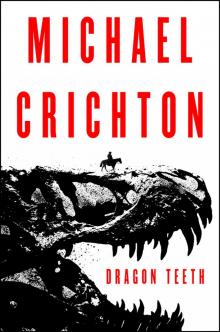 Dragon Teeth
Dragon Teeth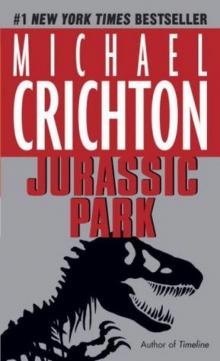 Jurassic Park
Jurassic Park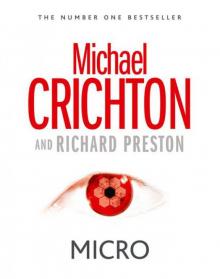 Micro
Micro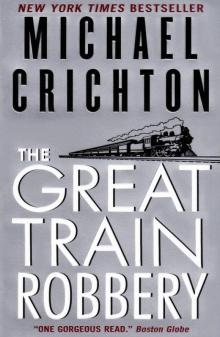 The Great Train Robbery
The Great Train Robbery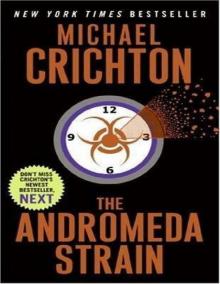 The Andromeda Strain
The Andromeda Strain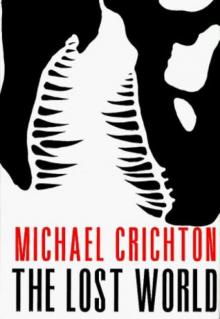 The Lost World
The Lost World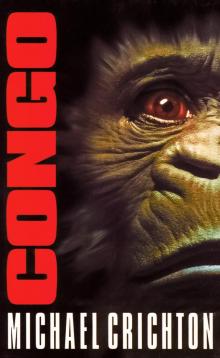 Congo
Congo Travels
Travels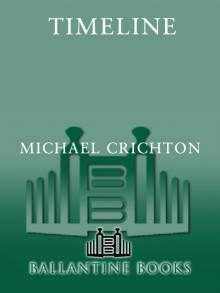 Timeline
Timeline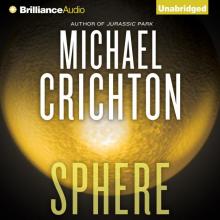 Sphere
Sphere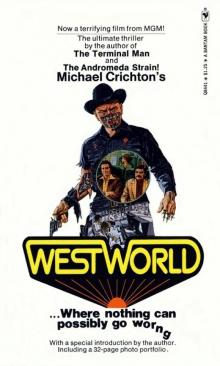 Westworld
Westworld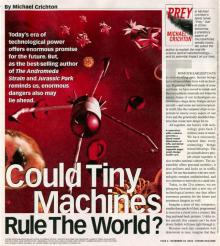 Prey
Prey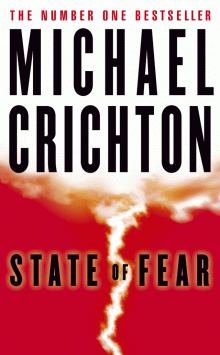 State Of Fear
State Of Fear Next
Next Disclosure
Disclosure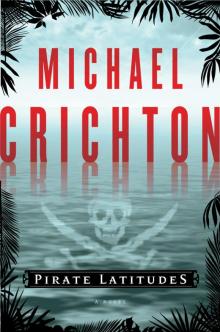 Pirate Latitudes
Pirate Latitudes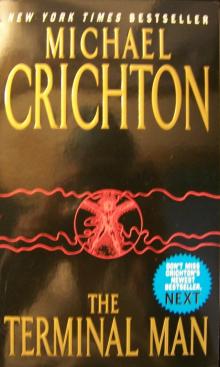 The Terminal Man
The Terminal Man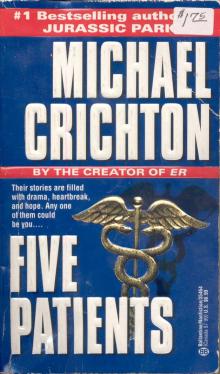 Five Patients
Five Patients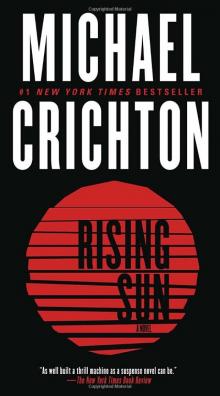 Rising Sun
Rising Sun Binary
Binary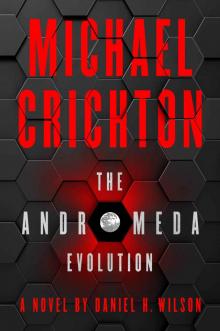 The Andromeda Evolution
The Andromeda Evolution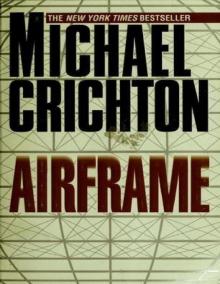 Airframe
Airframe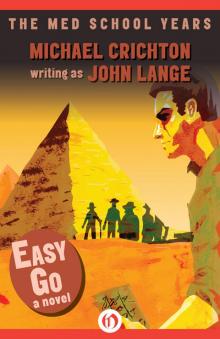 Easy Go
Easy Go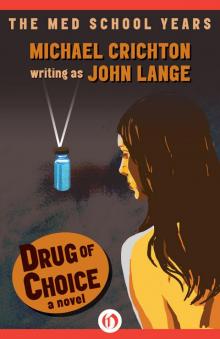 Drug of Choice
Drug of Choice Odds On: A Novel
Odds On: A Novel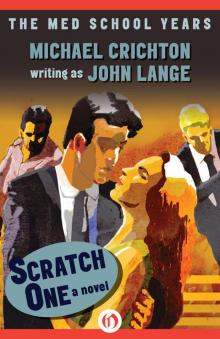 Scratch One
Scratch One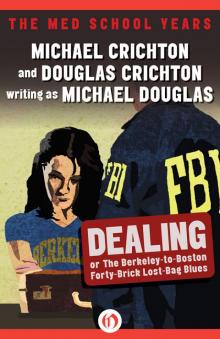 Dealing or The Berkeley-to-Boston Forty-Brick Lost-Bag Blues
Dealing or The Berkeley-to-Boston Forty-Brick Lost-Bag Blues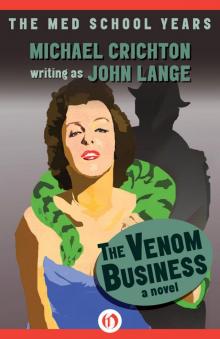 Venom Business
Venom Business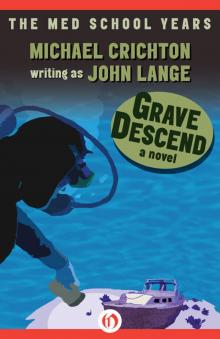 Grave Descend
Grave Descend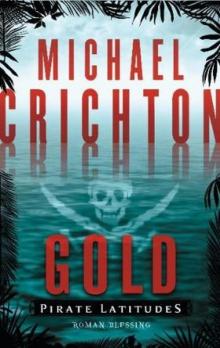 Gold - Pirate Latitudes
Gold - Pirate Latitudes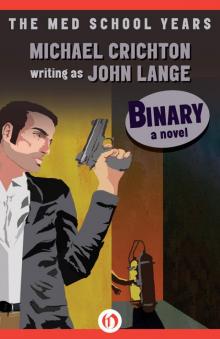 Binary: A Novel
Binary: A Novel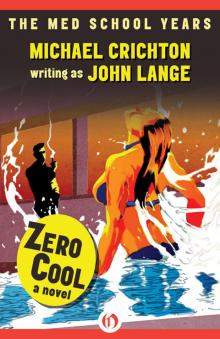 Zero Cool
Zero Cool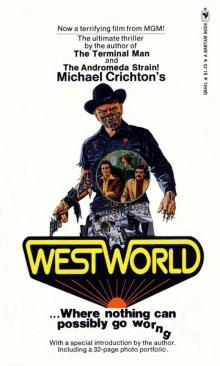 Delos 1 - Westworld
Delos 1 - Westworld